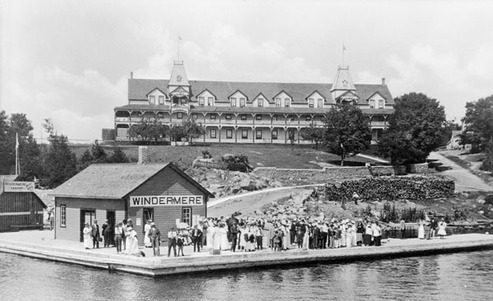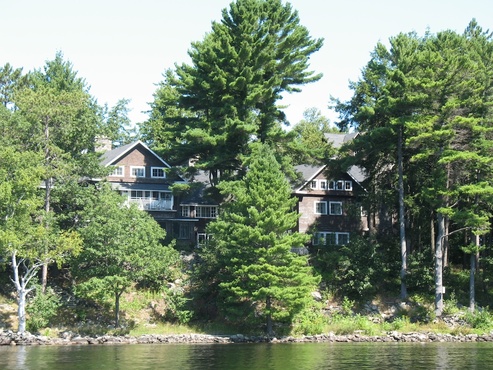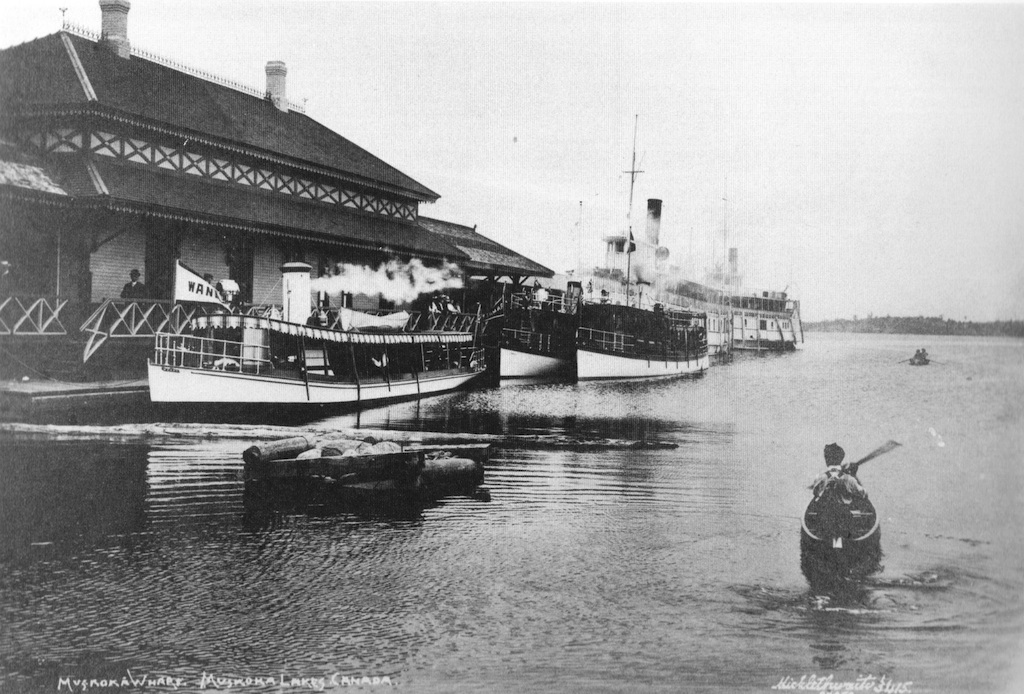National Geographic Travel editors selected Muskoka as the #1 summer destination of 2011!
|
Hardscrabble farmers accommodated the burgeoning influx of tourists and wisely expanded their homes into inns, like Windermere House above.
Visitors who were enchanted by the scenery built summer homes - called “cottages” - and often spent entire summers there, many on their own private islands. Constructed to house a family’s fleet of skiffs, runabouts, and launches, the picturesque boathouses are an integral part of the architectural uniqueness of these lakes. By 1900, the area was a renowned vacation paradise that enticed people from North America and abroad, including royalty and celebrities. Legends like Duke Ellington and Louis Armstrong entertained at major hotels. L.M. Montgomery, beloved author of Anne of Green Gables and numerous other books, spent a couple of weeks in the village of Bala in 1922. So impressed and inspired was she that she set one of her two adult novels, The Blue Castle, in Muskoka. |
Muskoka has been the summer playground of the rich and famous for well over a century - with good reason.
It’s a legendary land of magnificent lakes that lies about 100 miles north of Toronto, Ontario, Canada. Glaciers scoured the billion-year-old Pre-Cambrian Shield, leaving behind 1600 lakes characterized by rugged outcroppings of sparkling pink and black granite. Once the land of the Ojibwa Indians, it was opened up for settlement in the 1860s when the government offered free land grants. Ambitious, often impoverished immigrants from Britain and Europe attempted to farm land that turned out to have little tillable soil atop the backbone of rock. Lumbering denuded the primeval forests and further eroded the soil. It soon became evident that the attraction of Muskoka was not as farmland, but the sheer beauty of its pristine, island-dotted lakes. The first tourists arrived even before proper roads or railways were built. |
|
A fleet of majestic steamships serviced these large lakes until the 1950s, when better roads allowed cars to easily reach these remote areas, reducing the journey from a day to only a few hours. Previously, people would travel north from Toronto by train to Gravenhurst (see below), and then board one of the waiting steamers, along with their trunks, pianos, and even cows. The wealthy sometimes arrived in their own private Pullman coaches, with 30 servants in tow. The steamers would drop passengers off at resorts or cottages. |
Former U.S. President Woodrow Wilson owned an island on Lake Rosseau. The area around Beaumaris on Lake Muskoka was popular with industrialists and bankers primarily from Pennsylvania, especially Pittsburgh, and soon became known as “Millionaires’ Row” - in the days when a million dollars was a fortune. Many of the cottages here and elsewhere are still owned by descendants, each generation growing up on the lakes and forming a visceral bond with the rugged landscape.
The three large, interconnected lakes - Muskoka, Rosseau, and Joseph - once boasted over 100 resorts and hotels. Most succumbed to fire, as did Windermere House (pictured top left) in 1997 when it was being used as a Hollywood film set. Fortunately, it was rebuilt with commendable authenticity. [See the new one in the slideshow at the bottom of the page.]. Cleveland's House, pictured below, is one of the very few survivors from the 19th century. You can once again sail aboard the R.M.S. Segwun - the oldest operating steamship in North America, and one of Ontario’s biggest tourist attractions. Visit the Muskoka Steamships website for more info. Visit the Muskoka Tourism site, and find out why they claim "Muskoka: once discovered, never forgotten". It certainly captivated me! All photos in the slideshow below were taken in Muskoka and are copyright Gabriele Wills or copyright Melanie Wills. |




